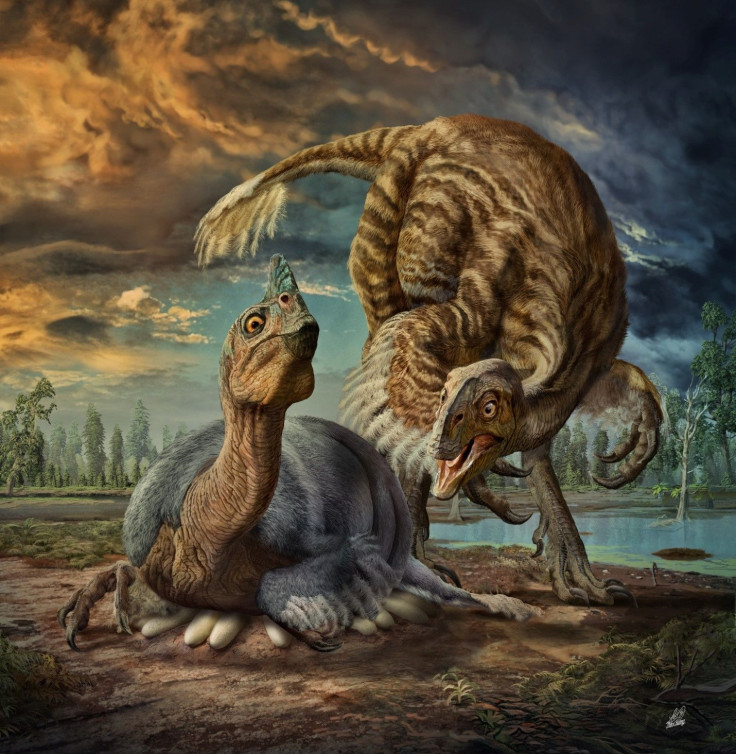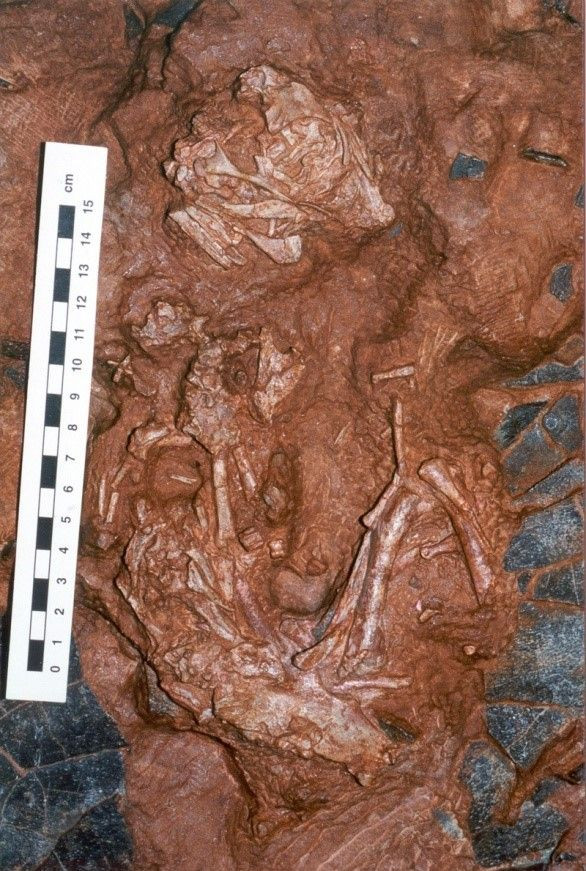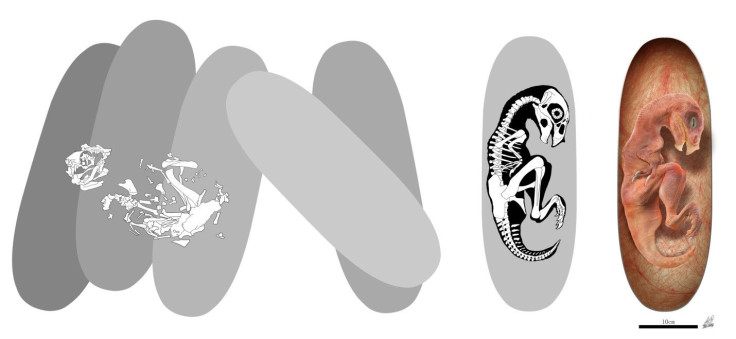New Dinosaur Species From China Was The Largest Known To Sit On Its Nest, Care For Young

Fossils dating back about 90 million years ago were found in Henan province of China in the early 1990s, but they have only now been identified as belonging to a previously unknown dinosaur species. Named Beibeilong sinesis, the oviraptorosaur was a giant bird-like dinosaur which is the largest known animal to have sat on its nest and care for its young.
B. sinesis lived during the Cretaceous Period about 90 million years ago. The adults likely stood about eight meters (over 26 feet) tall and weighed close to three tons. Its ring-shaped nest was two-three meters in diameter and contained a clutch of over two dozen eggs, each of which was up to 45 centimeters (a foot and a half) long and weighed about five kilograms (over 11 pounds). The species was closely related to birds, and probably had feathers, wings and a beak.
Read: ‘Last African Dinosaur’ Found In Morocco
The new species was described in a paper published Tuesday in the journal Nature Communications by a team of Chinese, Canadian and Slovakian researchers. The discovery was based on fossils of large eggs and an embryo that were found in Henan over 20 years ago, but were exported out of China, to the United States, soon after.
“This particular fossil was outside the country for over 20 years and its return to China finally allowed us to properly study the specimen and name a new dinosaur species, Beibeilong sinensis or baby dragon from China,” Lü Junchang, a paleontologist at the Institute of Geology, Chinese Academy of Geological Sciences, said in a statement released Tuesday.

The fossils were all found at a nest site, and the embryo died while hatching out of an egg. The fossilization of a smaller-bodied individuals while sitting on top of eggs led the researchers to conclude the species sat on their nests to incubate the eggs and cared for their young, making them largest ones to do so.
Read: New Dinosaur Species Found In Wyoming
Darla Zelenitsky, a professor at the University of Calgary who was part of the research team that described the fossil, said in the statement: “For many years it was a mystery as to what kind of dinosaur laid these enormous eggs and nests. Because fossils of large theropods, like tyrannosaurs, were also found in the rocks in Henan, some people initially thought the eggs may have belonged to a tyrannosaur. Thanks to this fossil, we now know that these eggs were laid by a gigantic oviraptorosaur, a dinosaur that would have looked a lot like an overgrown cassowary. It would have been a sight to behold with a three ton animal like this sitting on its nest of eggs.”

The fossils, found by Chinese farmers in 1993, are now permanently stored in the Henan Geological Museum. No adult bones of the species have been found, and all the descriptions in the paper are based on the eggs and embryo fossils alone.
© Copyright IBTimes 2025. All rights reserved.





















